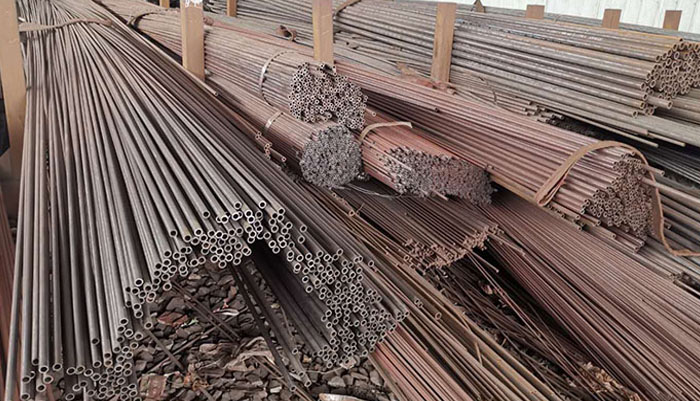The general production process of seamless steel pipe can be divided into cold drawing and hot rolling. The production process of cold-rolled seamless steel pipe is generally more complex than hot rolling. The pipe blank must first be subject to three roll continuous rolling, and the sizing test shall be carried out after extrusion. If the surface does not respond to the crack, the round pipe must be cut by a cutter to cut the blank with a growth of about one meter. Then enter the annealing process. The annealing shall be pickled with acid liquid. During pickling, pay attention to whether there are a large number of bubbles on the surface. If there are a large number of bubbles, it indicates that the quality of steel pipe can not meet the corresponding standards. The appearance of cold-rolled seamless steel pipe is shorter than that of hot-rolled seamless steel pipe. The wall thickness of cold-rolled seamless steel pipe is generally smaller than that of hot-rolled seamless steel pipe, but the surface looks brighter than that of thick wall seamless steel pipe. The surface is not too rough and the diameter is not too many burrs.
The delivery status of hot-rolled seamless steel pipe is generally hot-rolled and delivered after heat treatment. After quality inspection, the hot-rolled seamless steel pipe shall be strictly manually selected by the staff. After quality inspection, the surface shall be oiled, followed by many cold drawing experiments. After hot rolling, the perforation experiment shall be carried out. If the perforation expansion is too large, it shall be straightened and corrected. After straightening, it is transmitted to the flaw detector by the conveyor for flaw detection test. Finally, it is labeled and placed in the warehouse after specification arrangement.
Round tube blank → heating → perforation → three roll cross rolling, continuous rolling or extrusion → pipe stripping → sizing (or reducing) → cooling → straightening → hydrostatic test (or flaw detection) → marking → warehousing seamless steel pipe is made of steel ingot or solid tube blank through perforation, and then hot rolled, cold rolled or cold drawn. The specification of seamless steel pipe is expressed in mm of outer diameter * wall thickness.
The outer diameter of hot-rolled seamless pipe is generally greater than 32mm, and the wall thickness is 2.5-200mm. The outer diameter of cold-rolled seamless steel pipe can be up to 6mm, the wall thickness can be up to 0.25mm, the outer diameter of thin-walled pipe can be up to 5mm, and the wall thickness is less than 0.25mm. Cold rolling has higher dimensional accuracy than hot rolling.
Generally, seamless steel pipes are made of high-quality carbon bonded steels such as 10, 20, 30, 35 and 45, low-alloy structural steels such as 16Mn and 5mnv, or bonded steels such as 40Cr, 30CrMnSi, 45Mn2 and 40MnB. 10. Seamless pipes made of low carbon steel such as 20 are mainly used for fluid transmission pipelines. Seamless pipes made of medium carbon steel such as 45 and 40Cr are used to manufacture mechanical parts, such as stressed parts of automobiles and tractors. Generally, the strength and flattening test of seamless steel pipe shall be ensured. Hot rolled steel pipes shall be delivered in hot rolling state or heat treatment state; Cold rolling is delivered in heat treated condition.
Hot rolling, as the name implies, the temperature of rolled piece is high, so the deformation resistance is small and large deformation can be realized. Taking the rolling of steel plate as an example, the thickness of continuous casting slab is generally about 230mm, while after rough rolling and finish rolling, the final thickness is 1 ~ 20mm. At the same time, because the width thickness ratio of the steel plate is small and the requirements for dimensional accuracy are relatively low, the shape problem is not easy to occur, and the convexity is mainly controlled. For those with organizational requirements, it is generally realized through controlled rolling and controlled cooling, that is, to control the start rolling temperature and final rolling temperature of finish rolling. Round tube blank → heating → perforation → heading → annealing → pickling → oiling (copper plating) → multi pass cold drawing (cold rolling) → blank tube → heat treatment → straightening → hydrostatic test (flaw detection) → marking → warehousing.




